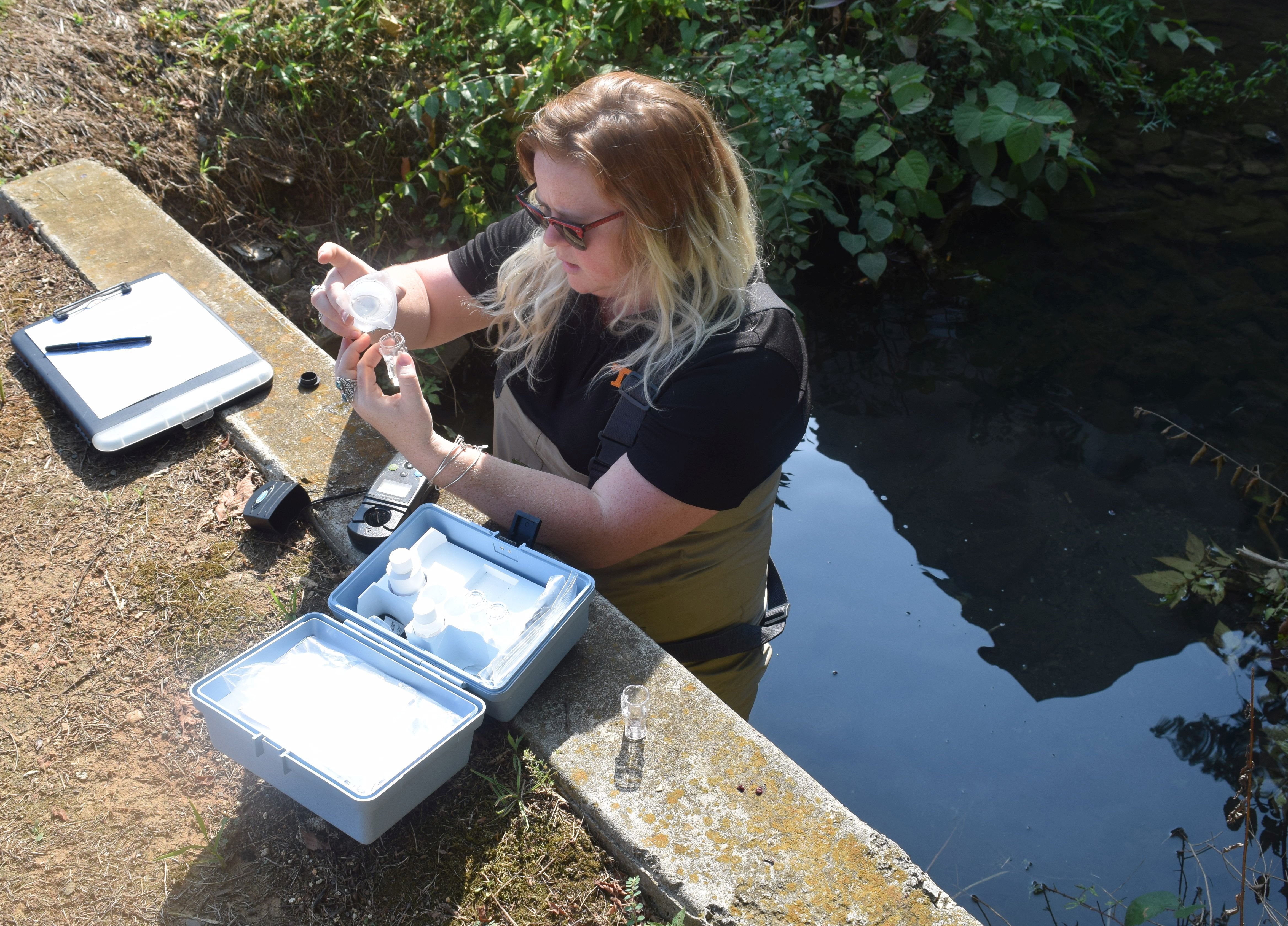The University of Tennessee Knoxville operates a Phase II Municipal Separate Storm Sewer System (MS4). The MS4 is governed by the State of Tennessee National Pollutant Discharge Elimination System (NPDES) permit. This permit is required by the Tennessee Department of Environment and Conservation as mandated by the Environmental Protection Agency under the Clean Water Act of 1972.
The primary goal of the MS4 is to improve and/or maintain the quality of surface waters by reducing the amount of pollutants in storm water as a result of continued urbanization. Polluted runoff is commonly transported through MS4s, from which it is often discharged untreated into local water bodies. To prevent harmful pollutants from being washed or dumped into an MS4, operators must obtain a NPDES permit and develop a Stormwater Management Plan which consists of six components.
The implementation and enforcement of these components,listed below, is collectively referred to as the Stormwater Management Plan.
- Public Education and Outreach
- Public Participation and Involvement
- Illicit Discharge Detection and Elimination
- Construction Site Stormwater Runoff Control
- Post-Construction Stormwater Management for New Development and Redevelopment
- Pollution Prevention and Good Housekeeping for University Operations
In order to achieve our Stormwater Management goals we work to maintain compliance with all applicable state and federal regulations regarding water resources, provide a regulatory framework to ensure our development has minimal impact on the environment, promote low impact development to help protect our natural hydrologic cycle, manage our ever growing Stormwater Infrastructure, and engage our community through public participation and education outreach events.
Stormwater Public Meeting
Our Stormwater Management hosts public comment meeting for the yearly Annual Stormwater Report. The report is a summary of all campus stormwater events, maintenance and policy changes from the previous fiscal year. This report is published to the State of Tennessee. We will be happy to discuss any aspects of the report, which can include any comments, suggestions or questions the campus population may have.
Stormwater Overview

What is Stormwater?
Stormwater is water runoff during and after a rain storm from streets, construction sites, parking lots, buildings and other areas that goes directly into storm drains and eventually into local streams and rivers. This water can pick up pollutants along the way to these streams and rivers. The University of Tennessee, Knoxville has set up a program that seeks to protect this water from pollutants.
Why are stormwater and sewer systems separate?
Stormwater systems are not treated at the waste water treatment facility. This water flows directly to the streams and rivers. Waste water (sewage) is sent to the waste water treatment facility and cleaned before it is released into the rivers.
How to Reduce Pollution in Stormwater Runoff
• Dispose of waste properly
• Place litter in proper containers
• Never dump anything into a storm drain
• Check vehicles for leaking fluids
• Recycle used motor oil
Current Structural Best Management Practices (BMPs)
- 8 cisterns, totaling approximately 111,000 gallons of captured and Stormwater to be reused for irrigation. Upon completion of the West Campus Housing Phase 1 this water will also be used to flush toilets and supply cold water forlaundry
- 18 water quality units total throughout campus designed to remove 80% of the Total Suspended Solids (TSS) present in Stormwater.
- Oil water separators are located in the parking garages to filter out hydrocarbons.
- 2 rain gardens are in operation at the Environmental and Landscape Lab and Biosystems Engineering and Soil Science (3100 square feet).
- 37,400 sq. ft. of Permeable pavers serving as an alternative to paving services that allows Stormwater infiltrate instead of running off. On the pedestrian bridge the pavers also act as a detention to capture Stormwater and slow therate of discharge.
- 38 Bio-Retentions structures called Silva Cells are installed beneath street trees, which capture and retain Stormwater for uptake by the trees.
- 2 Green Roofs have been installed covering 11,300 sq. ft.
- 895 feet of Grassed Swale allow infiltration of Stormwater and reduce the peak discharge.
- 7670 feet of vegetated filter strip which slows the overland flow and improves water quality prior to discharging into receiving waters.
- 3 Dry detention basins/vaults used to slow the peak Stormwater discharge.
MS4 Annual Reports
RESOURCES
Stormwater Mitigation Program 2023
Tennessee Erosion Control Handbook
Spill Prevention, Control & Countermeasures Plan
Runoff Reduction Policy
Illicit Discharge Policy
TN Stormwater Management Manual
UT PIE Plan
Enforcement Response Plan












